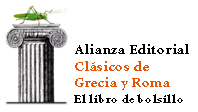Diomedes y Héctor: guerreros furiosos en la IlíadaDiomedes and Hector: Furious Warriors in the Iliad
Reyes Bertolín Cebrián
Resumen
Algunos guerreros indoeuropeos entraban en un trance furioso bajo determinadas circunstancias. A estos guerreros se les conoce como berserker en la tradición nórdica. El guerrero irlandés Cúchulainn también pertenece a este tipo de guerreros furiosos. En la Ilíada no hay ningún guerrero específico que posea todas las características de los guerreros indoeuropeos. Sin embargo, hay algunos que muestran algunos rasgos, por ejemplo, pelear bajo un estado de furia, no estar afectado por heridas, tener fuerza sobrehumana, emitir un fuego o una luz que brota de su cuerpo, confundir los límites humanos con los divinos … Diomedes y Héctor se examinan bajo el prisma de los guerreros berserker indoeuropeos.
Palabras clave: furia guerrera; berserker; Diomedes; Héctor
Abstract
Some Indo-European warriors were known to enter into furious trances under special circumstances. These warriors were known as berserker in Norse tradition. The Irish warrior Cúchulainn is also known as shape-shifter. In the Iliad there is no specific furious warrior, but several characters may share some of the traits of these warriors, such as fighting in a fury, not being affected by injuries, possessing superhuman strength, reflecting fire or light coming out of their bodies, blending the limits of their own natures with the nature of the gods. Features of Diomedes and Hector are examined as belonging to the tradition of Indo-European berserker.
Keywords: war fury; berserker; Diomedes; Hector
Referencias bibliográficas
Alberro, M (2005) Táin Bó Cuailnge (La Razzia de Ganado de Cuailnge), Toxoutos, A Coruña.
Bertolín Cebrián, R. (2010) «Some Greek Evidence for Indo-European Youth Contingents of Shape Shifters», The Journal of Indo-European Studies 38, n. 3&4, 343-357.
Brillet-Dubois, P. (2015) « ‘Hector tueur d’hommes’ ou ‘Hector dompteur de chevaux’. L’art formulaire au service du récit de l’Iliade», GAIA. Revue interdisciplinaire sur la Grèce ancienne 18, 261-273.
Kinsella, T. (1969) The Táin. From the Irish Epic Táin Bó Cuailnge, Oxford University Press, Oxford.
Míguez Barciela, A. (2019) «Los pechos de Hécuba», Dialogues d’histoire ancienne 45, n. 19, 81-93.
Nikolaev, A. (2017) «σθένει βλεμεαίνων», Glotta 93, 117-134.
Nordberg, A – Wallenstein, F. (2016) «Laughing Shall I Die! The Total Transformations of Berserkers and úlfhe∂nar in Norse Society», en P. Halden – P. Jackson (eds.), Transforming Warriors. The Ritual Organization of Military Force, London, Routledge, 49-65.
Rocella, G. (2022) Ancient Greek Hymns and Pastoral Gods: Comparative Studies in Poetics and Mythology, Tesis Doctoral, Universidad de Calgary, Calgary.
Speidel, M. (2002) «Berserks: A History of Indo-European ‘Mad Warriors’» Journal of World History 13, n. 2, 253-290.
Revista
-
Sobre la revista
Página principal
-
Estatutos
Estatutos de la Revista Estudios Clásicos
-
Código ético
Declaración de buenas prácticas
-
Normas de recepción y envío
Indicaciones para envíos de artículos
-
Equipo editorial
Consejos de redacción y asesor
-
Comité de honor
Comité de honor
Información
-
Para autores
Publicar con nosotros
-
Para evaluadores
Normas para evaluar artículos
-
Para bibliotecas
Información bibliográfica
-
Contacto
Cuestiones y preguntas
Publicar en EClás
-
Envío de originales
Artículos y reseñas
-
Normas de publicación
Descarga normas en PDF
-
Estilo CSL EClás
Estilo CSL EClás
-
Índices de calidad
Bases de datos e impactos


 c/ Serrano, 107
c/ Serrano, 107